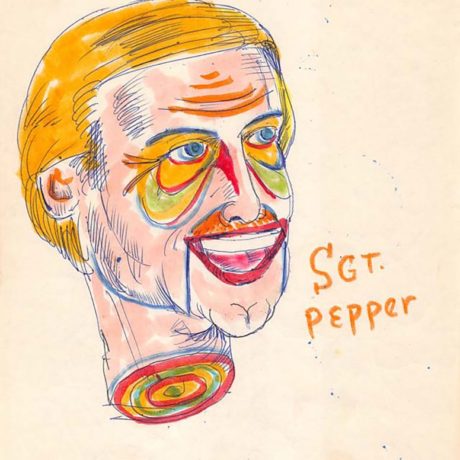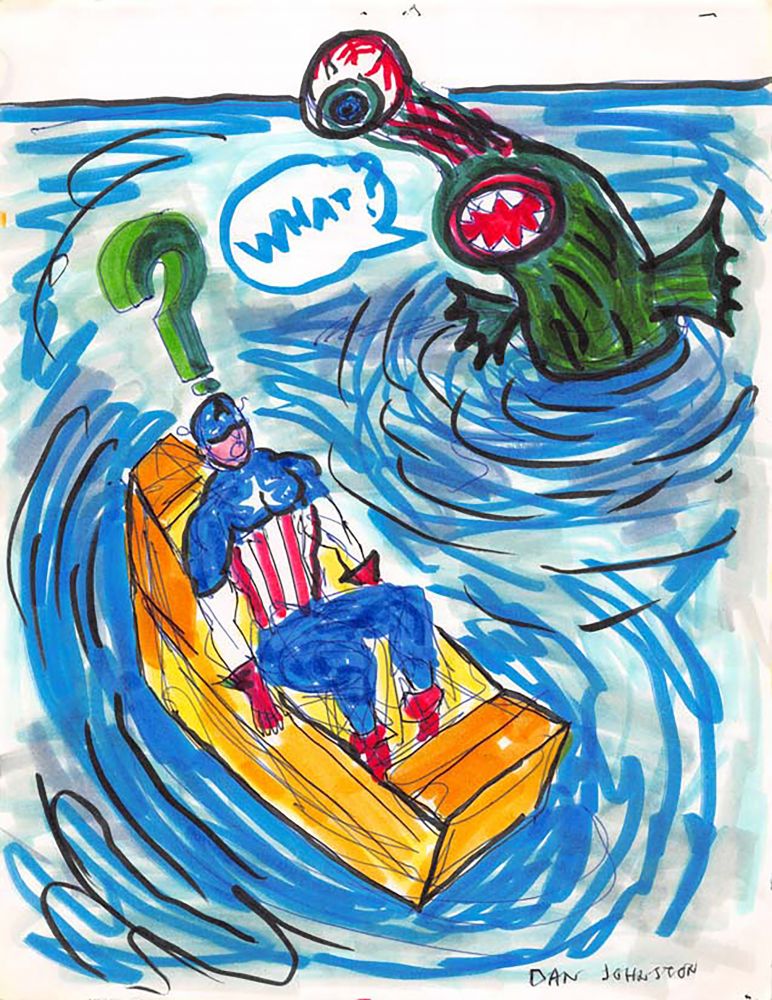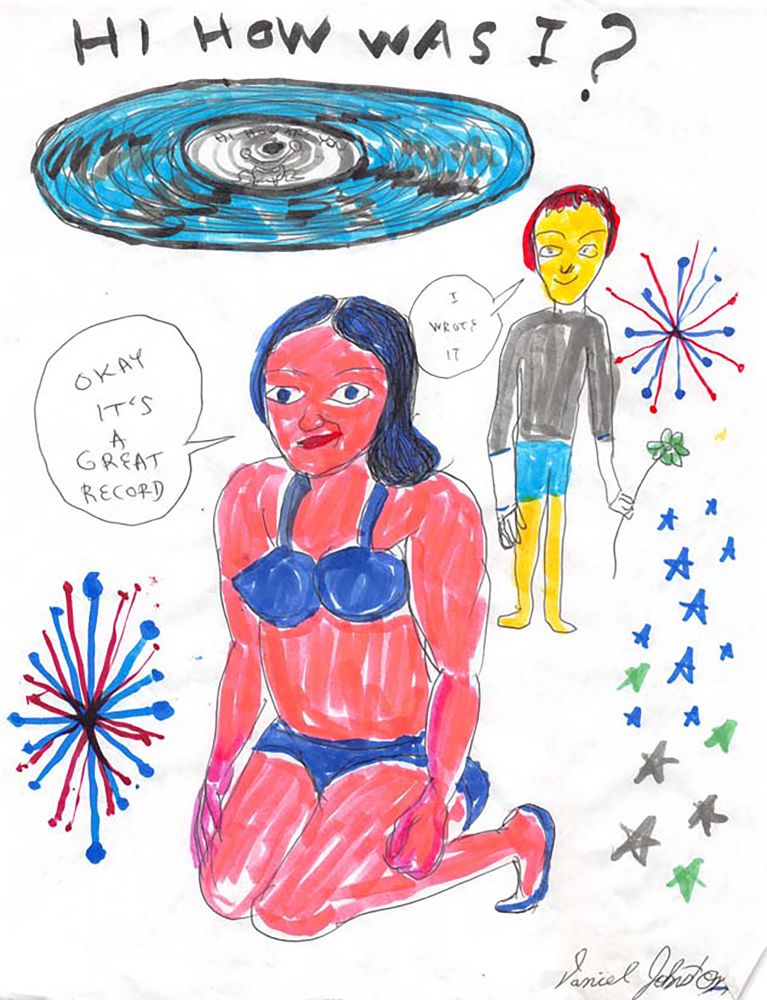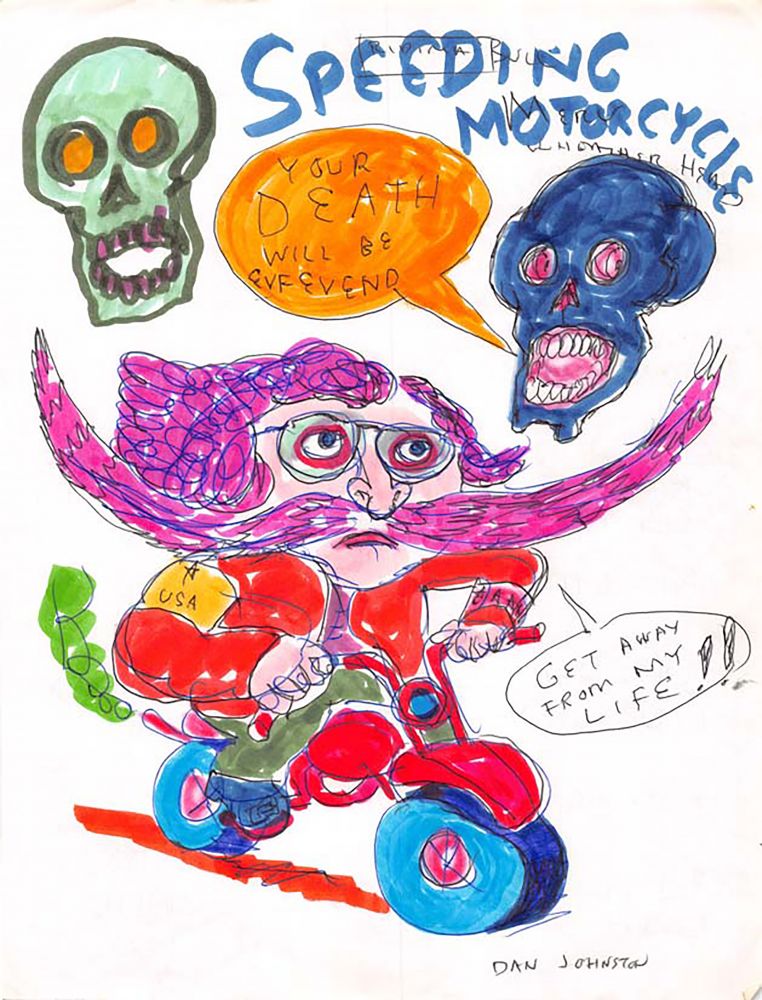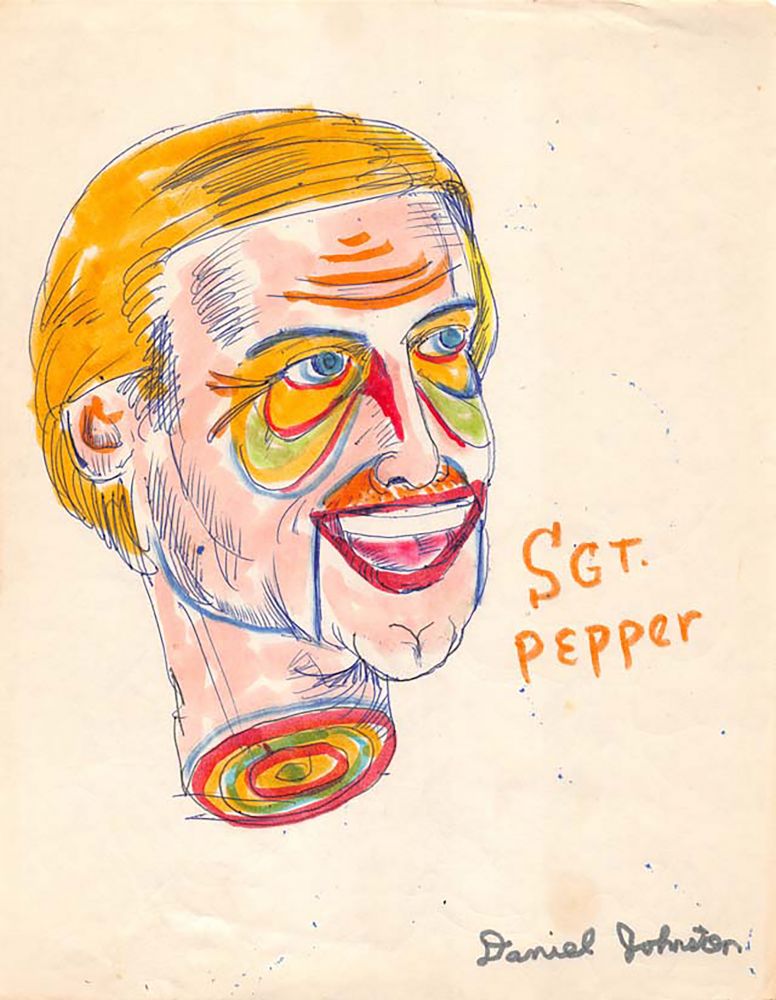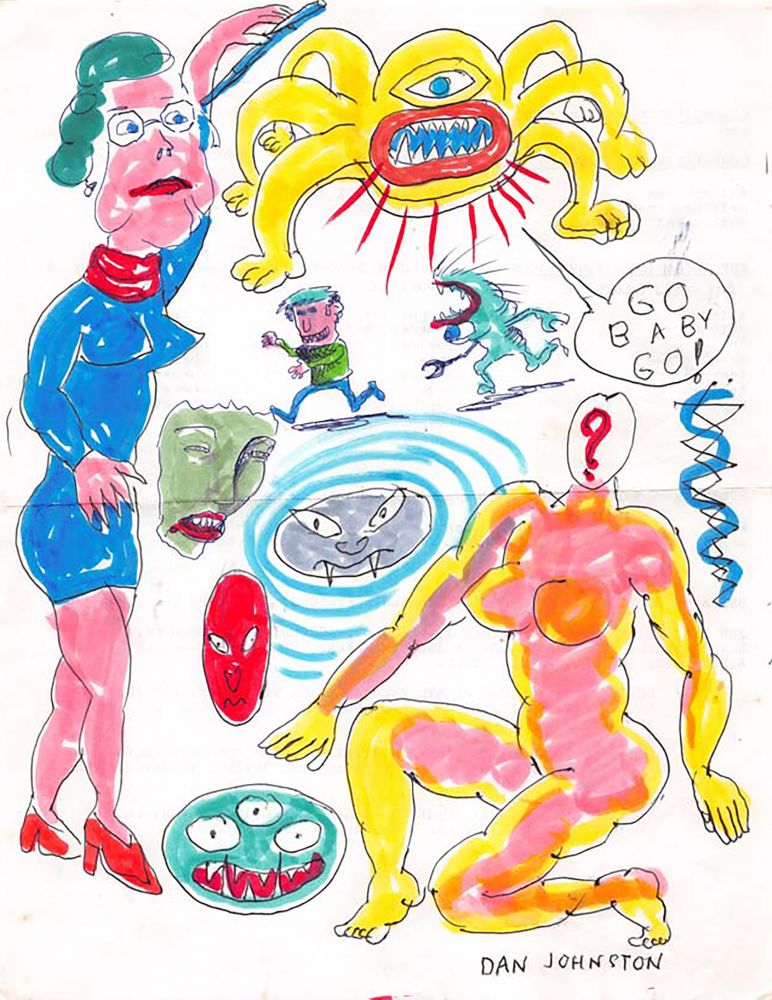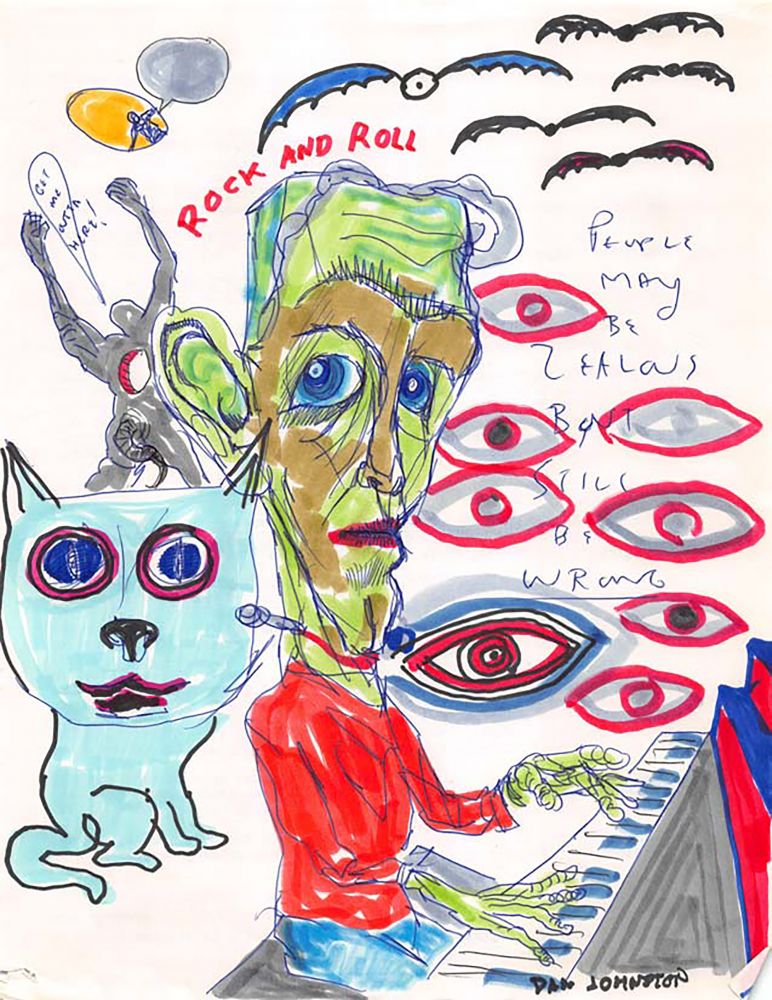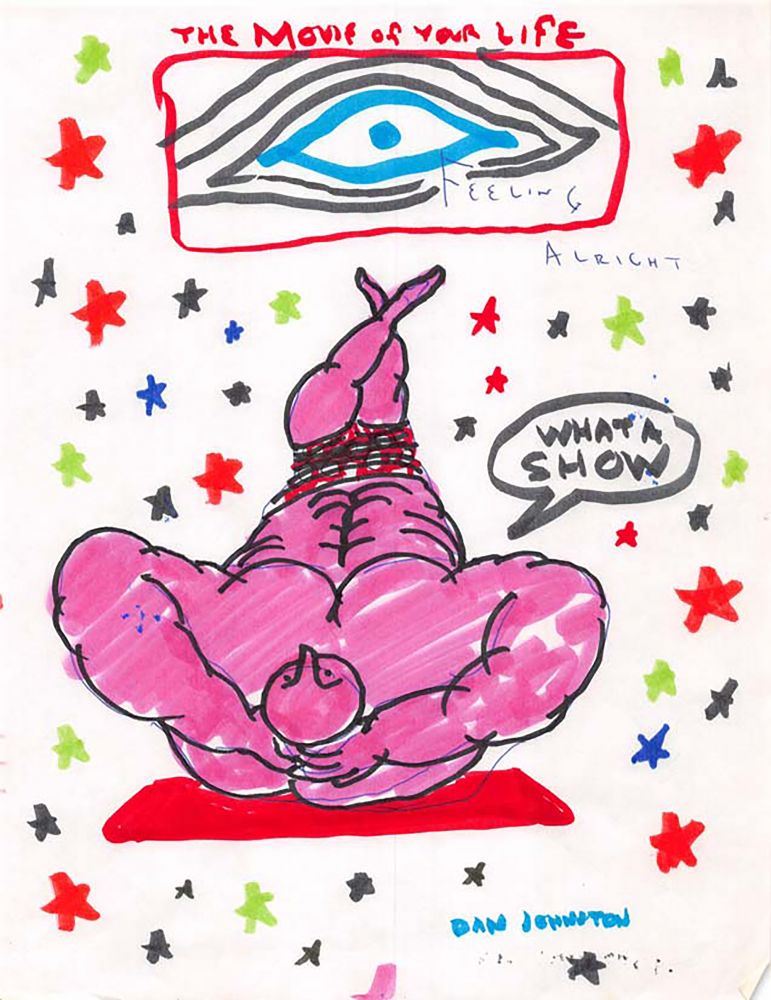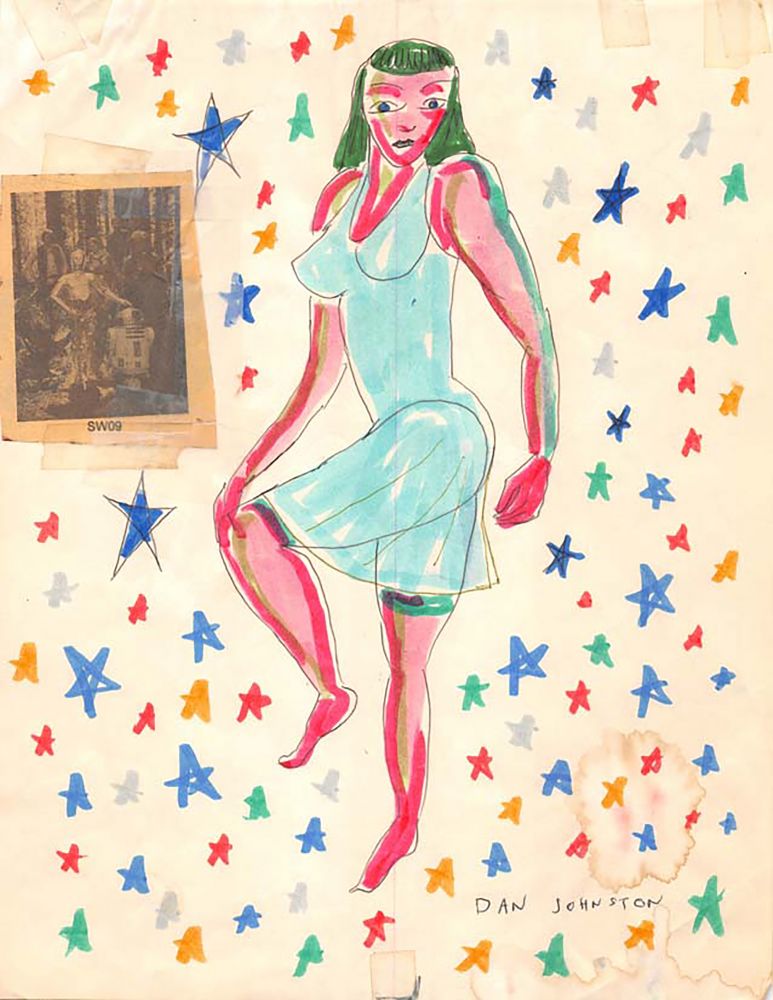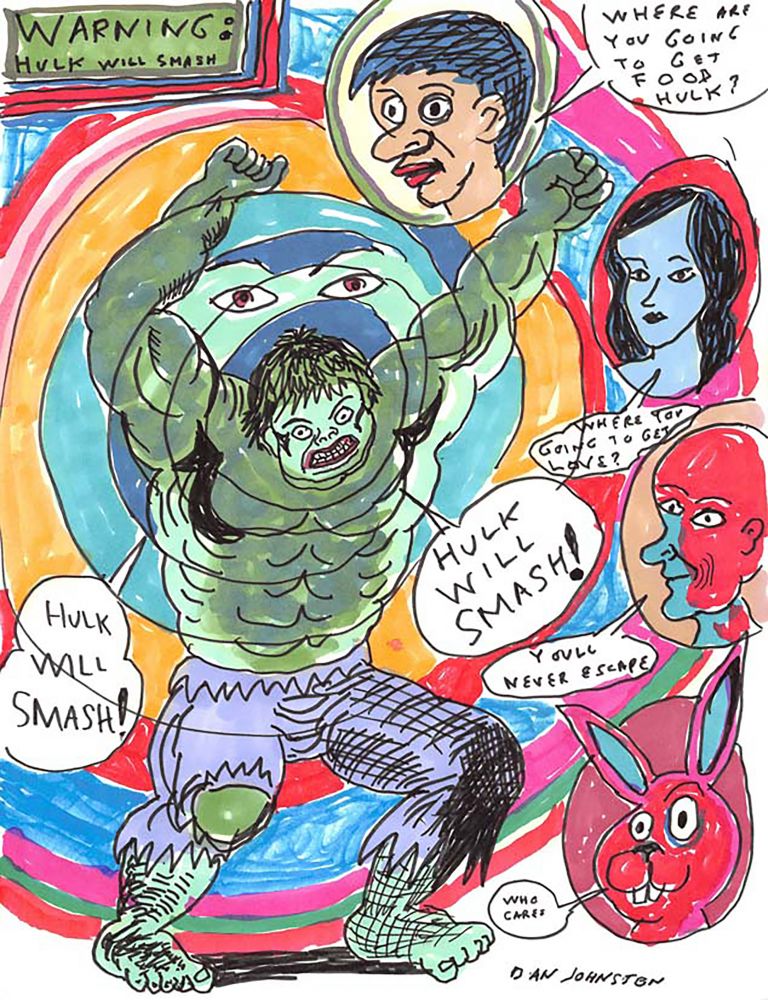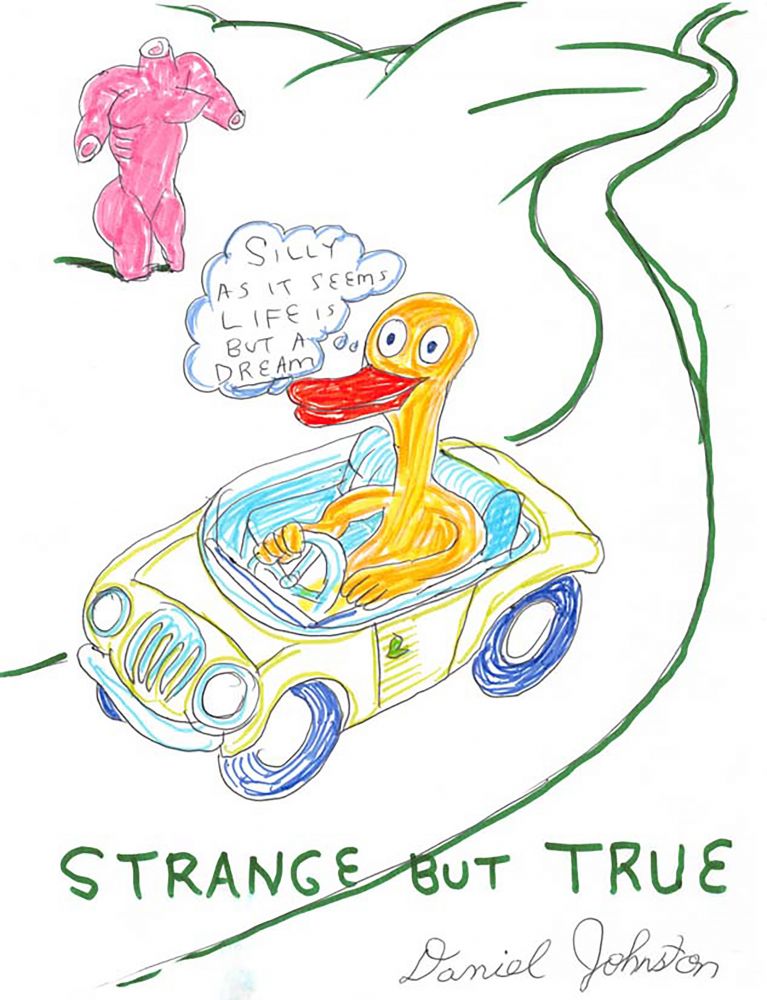
The term “outsider artist” is a fairly fraught one: the label is often subtly revealing about an artist’s perceived social class and status (that is, considerably lower than that of the monied art-world “establishment”). Writing on this subject for Elephant in 2019, Digby Warde-Aldam added that “history has a way of reading their achievements as visionary statements, obscuring the possibility that they might be driven by the same creative urges as more conventional artists.”
These observations feel very true and very important. However, for one artist that the term is endlessly associated with, it seems somehow fitting. Daniel Johnston was an outsider—the very archetype of a man looking in on worlds he would never be a part of (The Beatles, for instance, or acid freak punk a la Butthole Surfers) through smeared perspex windows. His outsiderness is his art: his plaintively direct missives, and disarmingly beautiful and strange way of looking at the world, capture everything an outsider is.
- Left: Daniel Johnston, WHAT?, 1981; Centre: Hi How Was I?, 2006; Right: Speeding Motorcycle, 1984
“Johnston’s plaintively direct missives, and disarmingly beautiful and strange way of looking at the world, capture everything an outsider is”
And unlike that cliché of certain bands or artists (often Kurt Cobain, if you’re in your thirties like me) as outsiders—brilliantly relatable because they made all the “outsider” sad teenagers in very baggy jumpers feel ok—Daniel Johnston’s outsiderness was impermeable. He was so unique in his entirely earnest, frequently baffling worldview that, while we can all identify with elements of his work and his life, it’s difficult to think of him as an outsider we can wholly identify with. It’s his unabashed, childlike idealism and a pain that was so raw and so heartbreakingly confusing that it was just his. He’s the outsider artist for people who grew out of identifying as outsiders, but still cry until their eyes can barely open when they listen to certain records.
This year’s edition of Outsider Art Fair hosted an exhibition of 30 of Johnston’s works on paper, titled Daniel Johnston: Psychedelic Drawings. The show is curated by American cartoonist, painter, designer and musician, Gary Panter; and presents many of Johnston’s more familiar motifs (his cartoon ducks, references to The Beatles, Casper the Friendly Ghost, Satan) alongside less familiar works. The images frequently pilfer directly from cartoons and pop culture, and are rendered in unselfconscious bright Magic Marker hues and with an energy that’s as forceful and vivid as his music. “In Johnston’s vocabulary, Satan and Captain America are not jokes; they embody internal virtues, aspirations, fears, and resistance that he himself lived out,” says Panter.
- Left: Daniel Johnston, Daniel Johnston, Sgt. Pepper, 1978; Right: Go Baby Go, 1982
“Daniel grew up, as I did, in a church that considers itself the only true Christian church, with everybody else destined for Hell. Not as a metaphor. And it was a church that forbade instruments in worship,” the curator adds. “So the experience was very austere and not usually emotional, and a cappella. So we learned to sing in harmony but there was a stigma regarding musical instruments, and especially dancing.”
“It is not unusual for the art of the ‘primitive’ or ‘disturbed’ to do work similar to practicing fine artists, and often they arrive with the goods first”
Panter has a longstanding interest in artists that “also suffered from neurological or psychiatric illnesses,” as he puts it, and says that he feels related “by methods, vision, emotion or empathy” to artists including Henry Darger, Susan King (who also incorporated cartoon characters, often using distorted drawings of the likes of Bugs Bunny and Daffy Duck) and Daniel Johnson, of course. “All have patchwork worlds that use the visual detritus of human image-making,” he says. “Daniel has taken a fairly limited set of cartoon characters and reintroduced them as players in a comic and serious titanic psychic struggle between darkness and light. And obsession of making is an underlying condition of the drawn situations of all three artists.”
“It is not unusual for the art of the ‘primitive’ or ‘disturbed’ to do work similar to practicing fine artists, and often they arrive with the goods first.” We spoke to Panter about his relationship with Daniel Johnston’s music and visual art, and Lee Foster of Electric Ladyland Studios, where the Psychedelic Drawings exhibition took place, has kindly made us a playlist of his personal favourite tracks by the artist.
Can you tell me more about how you first heard Daniel Johnston’s music, and your relationship with it?
In 1990, Kramer from Shimmy Disc records in NYC gave me a copy of Daniel’s first record, 1990. My music critic friends were onto the record and were very excited. I appreciated the intensity, earnestness, the emotions, the folk aspect of the record, but the music is too painful and obsessive for me personally to delve into. Since then I have had more LPs by Daniel sent my way by Jad Fair of Half Japanese who collaborated with Daniel… For me, it is sad and dark. Singing against the cosmos.
- Left: Daniel Johnston, Rock And Roll, 1980; Right: The Movie Of Your Life, 1981
Tell me more about what appeals to you about Johnston’s visual art as an artist yourself, whether that is the colours, composition, subjects or his appropriation of cartoons…
Your question contains the answer. I like all those things about it. Being from the same religious background and also being from the Texas psychedelic underground, we have things in common and I have insight into the notions that might push one over the edge in trying to judge what is true and false and real and symbolic in Texas.
It is earnest, energised, intense, colourful and has an underlying set of recurring narrative concerns and issues. There are good shape silhouettes and they are well composed in a fluid and spontaneous way.
How do you think his art helps us to hear his music in new ways? What does it tell us about him as an artist more broadly?
I’m not sure, but I like artists who work in many mediums and also artists who evolve. Folk artists, as we may call them, often have a very consistent fully formed vision and clarity in their work which does not change so much over time. Daniel made musical art, propelled his personal graphic art, and also gave his imagery a stage on album covers and promotional t-shirts, posters for events. He had more than one mania and that brought him into view. The music and drawings are both very colourful in tone.
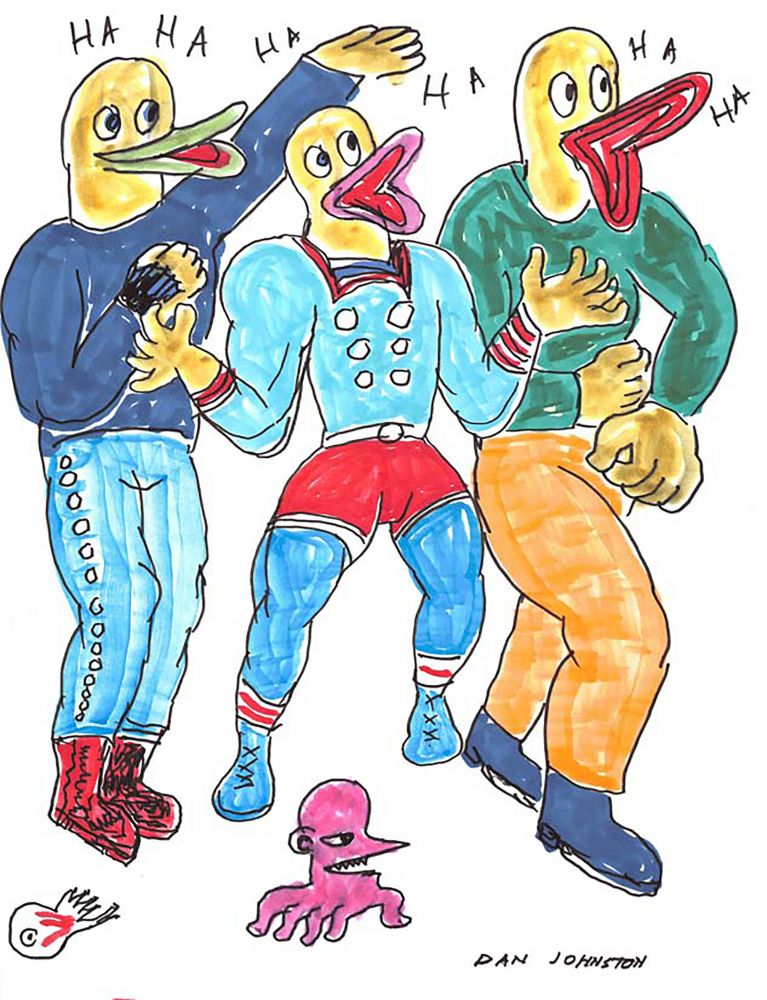
“We recognise art that expresses our inner hopes, fears, distress and idealism. That art can be nurturing—a balm to our distress”
Your essay accompanying the online show contains the phrase “It is hard to make impractical work in a practical world.” Can you expand on that a little?
Artists, by nature, are somewhat impractical and struggle to fit in, or find a place to survive, to support their need to make things. It is hard. Mentally distressed artists have a harder path unless they are lucky to have family support or some way that their art transforms their lives by being noticed. It is easier to “fail” and disappear for people who are more challenged. We all suffer, though. Our suffering can open us or close us and we recognise art that expresses our inner hopes, fears, distress and idealism. That art can be nurturing—a balm to our distress.
- Left: Daniel Johnston, Star Wars, 1980; Centre: RATS!, 1985; Right: Hulk Will Smash, 2000
Do any works in particular stand out to you?
I don’t really have favourites in the show as I was aiming for a set of my favourites that would hang together nicely. I favour ones where comic characters emerge and there are fewer images of Jesus or Satan, which are somewhat disturbing to me, though Jesus and Satan and demons are essential to Daniel’s vocabulary.
For some reason, there are a lot of cartoon ducks lurking in the backwoods and deep consciousness of humanity. They are strewn across the world in Susan King’s work. They lurk in the cloud forms of Darger’s wild landscapes. They come right out and quack loudly in legions in Daniel Johnson’s work.
Daniel Johnston: Psychedelic Drawings
On show as part of the Outsider Art Fair at Electric Lady Studios, New York, February 2021
VISIT WEBSITE